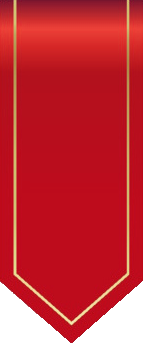
Chapter Four
Chapter Four explores Rossano's early film career in Rome and, at the age of 24, his marriage to Lydia who would prove to be the strength behind his success. We also get a glimpse of the Italian temperament that the couple had.
First stop is the Cinecitta Film Studios where Rossano talks about his early film roles. Rossano was actually signed to Scalera Studios but that company went out of business after the war. However, he did film here many times and his photograph appears in one of the exhibitions there. The studio is about a half-hour train ride on the metro (Cinecitta Stop) and delivers you just outside the entrance. They do an English-speaking tour and it is an interesting place to look around. Most of the buildings have not changed at all. The only new feature is the huge area at the rear which accommodates static reconstructions and a massive green screen. The studio is still used by global film companies.
On the left is the smallest sound stage. Second from the left is the mock ancient Roman city. Third left is a still of Rossano from an exhibition in the studios and far right is a view across the main green just past the entrance.
Rossano's marriage to Lydia in 1940 ran into a few problems. For details, read the book! There are no wedding photos and, when you read the story, you'll understand. Also, of course, back then, not many people had a photographer at their wedding. There are very few of Rossano and Lydia during this time but this one is, I think around the early 1950s. The one on the right, of Rossano, was taken in 1948 so he would have been 31/32 years old.
These are photos from the press release for Rossano's film, Kean. He was under contract to Scalera Studios and this is a role that he loved because he had to age three decades during the course of the film. At the time, Rossano was 24 years old and Scalera took a huge risk casting him. It received rave revues. Unfortunately, the film is not available to view or purchase anywhere. I found this press release on EBay and they do still occasionally come up for sale.
The Caffe Castellino was frequented by Rossano and Lydia during their lean years. It was a sparse and cheap cafe and is still open today, decades later; still sparse, still cheap. Very central location on Via Cesare Battisti, by the Piazza Venezia. Lydia was approached by a director here when the couple were first married. She took the role. Not because she wanted it but because they needed the money!
Tosca is the first of Rossano's Italian films that I purchased when doing my research. He made over 220 films and most of them are not available now. But, as Tosca was such a success in Italy, I wanted to get hold of it and found that it is available, with English subtitles, on DVD. I have to admit that I was not a fan of opera but, this opened my eyes to that genre because it is a dramatisation. They use the music and three or four of the songs but I found it much easier to understand as a drama. During my first visit to Rome, I managed to see Tosca as an opera and, to my surprise, I have grown to love this genre.
If you visit Rome, many of the churches have operas performed in them, presumably by out of work opera singers. The standard is high and it is a lot cheaper than going to the Opera House!
The black and white photo show Rossano in his role as Mario Cavaradossi.
Rossano had many high-profile stage directors and actors teaching and encouraging him. This photo shows an older Emma Grammatica with Renato Simoni, a leading figure in early 20th century Italian theatre. It is Renato who gave Rossano his big break on the stage, performing at the Boboli Gardens. Renato took a huge chance on giving Rossano leading roles at significant theatrical festivals and theatres. Rossano was still working as a lawyer but, all the time, learning the skills needed to be a stage actor.
One of those roles was the lead in the play, Aminta, in the late 1930s. Even in the 1950s, critics were still raving about this particular play.